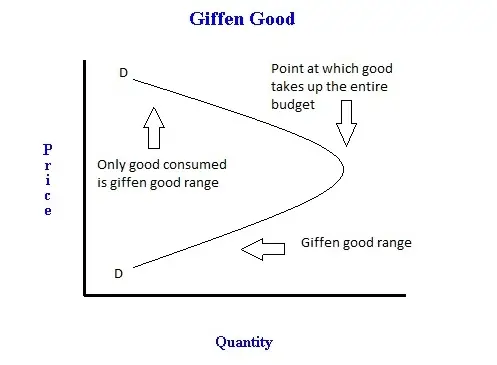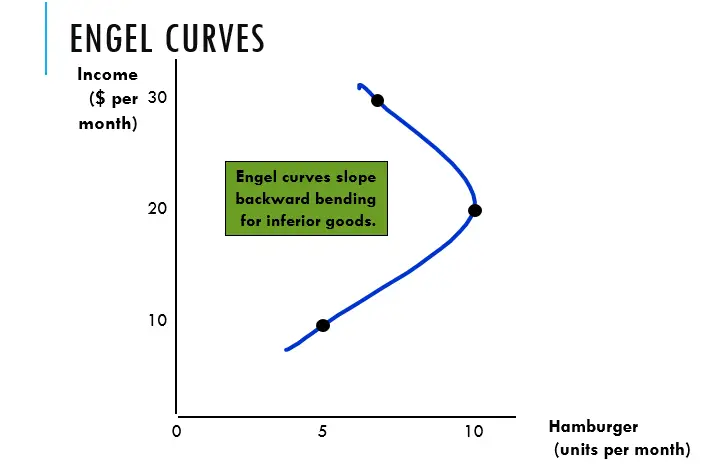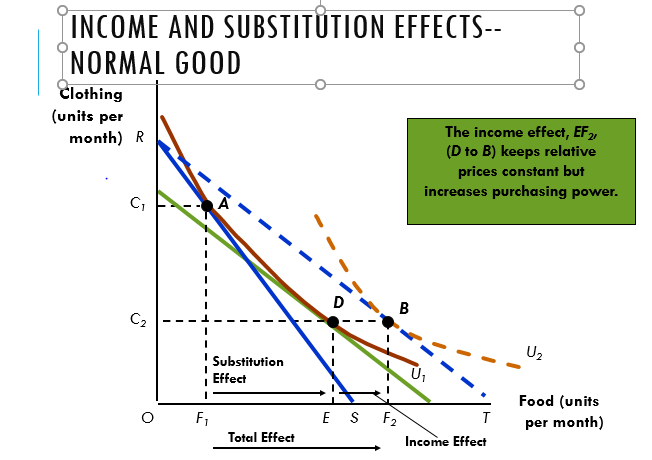What is Giffen Good | Giffen Good Example
Economics is the study of how people choose to allocate limited resources. It is no longer a science that studies only markets but has expanded into many other areas, including non-market activities and exchanges such as government actions or nonprofit organizations.
As one would expect from any science, economics aims to make predictions about what will happen in certain situations and under certain conditions.
For example, if we know some people are willing to pay higher prices for a product than others (e.g., most wealthy consumers are willing to spend more on luxury cars), then we might be able to predict whether raising the income will affect the consumptions of product or service.
Different Types Goods in Economics
What are Goods?
Goods are tangible and movable objects that have value to consumers. Examples of goods include various consumer products, such as vehicles, foodstuffs, clothing, appliances, and electronics.
There are different types of goods;
Normal Goods
A normal good means an increase in income causes an increase in demand. It has a positive income elasticity of demand YED. Note a normal good can be income elastic or income inelastic.
To know what is a normal good, it’s necessary to define and understand the term “normal.” Normal means typical, conforming with or constituting a standard type. In other words, something that is normal or usual for most people at most times. Normal goods have a positive income elasticity of demand –YED. A normal good means an increase in income causes an increase in demand.
Luxury good
Luxury goods have a significant price tag and offer the most luxurious experience in their respective category. They can be compared to supercars, which cost more than regular cars but provide an unmatched driving experience. In today’s world, luxury items are not limited to automobiles alone – they include other types of high-end products like watches, jewelry, or even handbags. Luxury goods stores often stock such brands as Gucci, Dolce & Gabbana, and Ralph Lauren. The latter brand has been one of the pioneers in the American fashion industry for many years now and is known.
An increase in income causes a bigger percentage increase in demand for luxury goods. When income rises, people spend a higher percentage of their income on luxury goods.
Inferior good
For inferior goods increase in income leads to falling in demand. It is good with a negative income elasticity of demand.
Necessity good
A necessity good is good that someone must have to survive. It is the most basic form of goods and services, including food, clothing, shelter, and healthcare. The way necessities are produced can be divided into manufacturing or agriculture – which involves growing crops for human use and mining – extracting minerals from the earth for industrial purposes.
Comfort good
A comfort good is a product that improves the level of well-being. Comfort goods are often associated with status or having high-quality standards.
Complementary goods.
The concept of a complementary good is used in microeconomic theory to determine the amount of one good that will be purchased when another good is also being purchased. A compliment can be an addition to something already existing, such as adding chocolate chips on top of ice cream or adding computer hardware and software applications to complete a device or system.
The word “complementary” implies that two things are needed together for completion; they work well with each other in order for either item to provide full value or function. e.g., TV and DVD player.
Substitute goods.
A substitute good is a product that can be used in place of another with little to no difference. These goods will be seen as equal and will only have small differences such as price, quality, brand recognition, or availability.
Substitute goods are able to satisfy the same want or need within an economy by offering similar features at less cost than other products would charge for them.
Giffen good.
A Giffen good is a special type of goods that exhibits the opposite relationship between price and quantity demanded. It means as the price rises, instead of falling demand, it increases. This phenomenon is called Giffen Paradox because it contradicts the basic laws of supply and demand. Possible examples of Giffen good – rice, potatoes, bread.
Veblen / Snob good.
In economics, a Veblen good is defined as a luxury product whose price will rise with increasing potential buyers’ income. The opposite of such goods is Giffen Goods, the demand for which rises at times when an increase in income would be enough to make people worse off.
Giffen Goods and Examples
In economics, a Giffen good is one for which an increase in price leads to an increase in demand. The converse holds true as well: if the price of a product decreases, total demand for that product will decrease. This might seem illogical—why would consumers buy more of something when its price goes up?
A Giffen good is a low-income, non-luxury commodity that challenges the traditional economic and market demand theory. The demand for Giffen products increases as the price rises and falls as the price falls. This results in an upward curve of demand in econometrics, contrary to the fundamental laws of demand that generate a downward curve of demand.
Giffen good was named after the Scottish economist Sir Robert Giffen, to whom Alfred Marshall credited the concept in his book Principles of Economics, first published in 1890.
When the item is scarce, people want more. If it’s an inferior good, then demand will fall as income falls.Potatoes during the Irish Great Famine were once considered to be an example of a Giffen good

Giffen Paradox
What is the Giffen paradox?
In economics, the Giffen paradox is a theory that states that as the price of certain good increases, the income consumers would have to give up in order not to buy it rises by less than the price increase.
As such, even though an individual consumer’s real income has fallen due to a price increase, his or her demand for this good may actually rise.
Giffen Paradox Example
A Giffen Paradox is a pricing situation in which an increase in price leads to an increase in the quantity demanded. It isn’t very easy, but we can break it down into three simple steps:
First, there are two groups of consumers – those who prefer A over B and those who prefer B over A.
Second, both products are priced identically; and lastly, the demand curve for good X shifts rightward when its price increases.
Giffen Goods Demand Curve
A Giffen good is a special type of commodity that has the unusual characteristic whereas the price increases, people will buy more of it. This phenomenon occurs mainly in developing countries with low-income levels and high costs of living.

Normal and Inferior Goods Examples
What are the normal and inferior goods examples?
Normal goods are those for which demand increases when income rises. It has a positive income elasticity of demand YED. Note a normal good can be income elastic or income inelastic.
Examples of Normal Goods include items like TVs, cars, and home appliances.

A Giffen Good is a special type of goods characterized because as its price increases, rather than decreasing as with most goods, consumers buy even more of it. Examples of inferior goods are clothing and luxury items.
-
Check Related: Non-Rivalrous Goods Examples
Income Consumption Curve and Engel Curve
Engel Curve for Giffen Good
The Engel curve, named after the German statistician Ernst Engel (1821-96), shows the relationship between the demand for the good and its buyers’ income, the goods depending on the income. The Engel curve is a graph showing how the amount consumed varies with the change in income.

Engel Curve for Giffen Good
Engel Curve for Normal Goods and Inferior Goods
Engel curves relate the number of goods consumed to income. If the good is normal, the Engel curve is upward sloping. If the good is inferior, the Engel curve is downward sloping.
In the case of a normal good, the demand for quantity increases with an increase in income, therefore, allows the Engel curve to have a positive incline.
On the other hand, in the case of an inferior product, the Engel curve is negatively inclined.
Engel Curve for Normal Goods

Engel Curve for Inferior Good

Engel Curve for Normal and Inferior Good

Income and Substitution Effect
A fall in the price of a good has two effects. Consumers experience an increase in real purchasing power. They will tend to consume more of the good that has become relatively cheaper, and less of the good that is now relatively more expensive.
The substitution effect is the change in an item’s consumption associated with a change in the item’s price, with the level of utility held constant.
When the price of an item declines, the substitution effect always leads to an increase in the quantity of the item demanded.
The income effect is the change in an item’s consumption brought about by the increase in purchasing power, with the item’s price held constant.
When a person’s income increases, the quantity demanded for the product may increase or decrease. It usually still increases
Even with inferior goods, the income effect is rarely large enough to outweigh the substitution effect.
Income and Substitution Effects for Normal Good

Income and Substitution Effects for Normal Good

Difference Between Normal Inferior and Giffen Goods
Giffen goods and inferior goods are two types of goods with distinct characteristics. In general, Giffen’s law is used to describe a type of behavior that occurs when there is a price increase, but the demand for the good does not decrease.
Conversely, inferior goods occur when there is an increase in income while the price remains constant or decreases; therefore, demand increases as well. Understanding what distinguishes these two types can help you determine how much your product should be charged and how to market it effectively.
The substitution effect often works in such a way that, as the relative price of a good falls (real income stays constant), more of it is bought. However, the revenue effect will work in either direction – if the customer earns more income, more or less good x can be purchased.
If less is bought, then this is said to be a normal inferior good.
If the customer buys less and the sales effect is actually greater than the substation effect, the net effect of the price reduction is a decrease in demand, so the good is said to be a Giffen Good.

For Normal Inferior Goods, the negative income effect is smaller than the substitution effect. For Giffen Goods, the negative income effect is bigger than the substitution effect so that the net effect of a fall in the price of x is a fall in quantity demanded




